“Varanasi, Also Known As Benares, Banaras, Or Kashi, Is A City On The Banks Of The River Ganges In Uttar Pradesh, India. ”
 A major religious hub in India, it is the holiest of the seven sacred cities (Sapta Puri) in Hinduism and Jainism, and played an important role in the development of Buddhism and Ravidassia. Varanasi grew as an important industrial centre famous for its muslin and silk fabrics, perfumes, ivory works, and sculpture. Buddha is believed to have founded Buddhism here around 528 BCE when he gave his first sermon, "The Setting in Motion of the Wheel of Dharma", at nearby Sarnath.
A major religious hub in India, it is the holiest of the seven sacred cities (Sapta Puri) in Hinduism and Jainism, and played an important role in the development of Buddhism and Ravidassia. Varanasi grew as an important industrial centre famous for its muslin and silk fabrics, perfumes, ivory works, and sculpture. Buddha is believed to have founded Buddhism here around 528 BCE when he gave his first sermon, "The Setting in Motion of the Wheel of Dharma", at nearby Sarnath.
Several other major figures of the Bhakti movement were born in Varanasi, including Kabir and Ravidas. Guru Nanak visited Varanasi for Maha Shivaratri in 1507, a trip that played a large role in the founding of Sikhism. Varanasi has been a cultural centre of northern India for several thousand years, and is closely associated with the Ganges. Hindus believe that dying here and getting cremated along the banks of the "holy" Ganges river allows one to break the cycle of rebirth and attain salvation, making it a major center for pilgrimage.
The city is known worldwide for its many ghats, embankments made in steps of stone slabs along the river bank where pilgrims perform ritual ablutions. Of particular note are the Dashashwamedh Ghat, the Panchganga Ghat, the Manikarnika Ghat, and the Harishchandra Ghat, the last two being where Hindus cremate their dead. The Hindu genealogy registers at Varanasi are kept here. The Ramnagar Fort, near the eastern bank of the Ganges, was built in the 18th century in the Mughal style of architecture, featuring carved balconies, open courtyards, and scenic pavilions. Among the estimated 23,000 temples in Varanasi are Kashi Vishwanath Temple of Shiva, the Sankat Mochan Hanuman Temple, and the Durga Temple.
The Kashi Naresh (Maharaja of Kashi) is the chief cultural patron of Varanasi, and an essential part of all religious celebrations. The city has long been an educational and musical centre: many prominent Indian philosophers, poets, writers, and musicians live or have lived in the city, and it was the place where the Benares gharana form of Hindustani classical music was developed. One of Asia's largest residential universities is Banaras Hindu University (BHU).
The Ganga Ghats in Varanasi
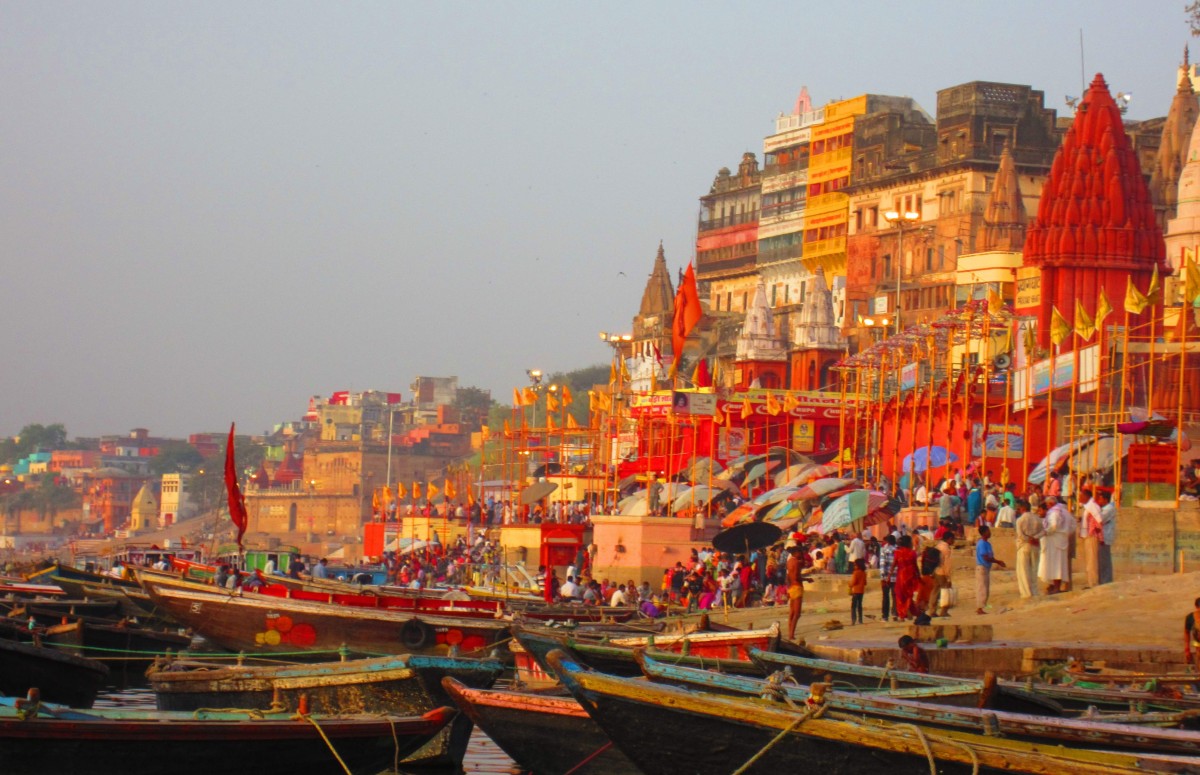 The Ghats in Varanasi are world-renowned embankments made in steps of stone slabs along the river
bank where pilgrims perform ritual ablutions.
The ghats are an integral complement to the Hindu concept of divinity represented in physical,
metaphysical, and supernatural elements.Varanasi has at least 84 ghats, most of which are used for
bathing by pilgrims and spiritually significant Hindu puja ceremony, while a few are used
exclusively as Hindu cremation sites.
Steps in the ghats lead to the banks of Ganges, including the Dashashwamedh Ghat, the Manikarnika
Ghat, the Panchganga Ghat, and the Harishchandra Ghat, where Hindus cremate their dead.
Many ghats are associated with Hindu legends and several are now privately owned.
The Ghats in Varanasi are world-renowned embankments made in steps of stone slabs along the river
bank where pilgrims perform ritual ablutions.
The ghats are an integral complement to the Hindu concept of divinity represented in physical,
metaphysical, and supernatural elements.Varanasi has at least 84 ghats, most of which are used for
bathing by pilgrims and spiritually significant Hindu puja ceremony, while a few are used
exclusively as Hindu cremation sites.
Steps in the ghats lead to the banks of Ganges, including the Dashashwamedh Ghat, the Manikarnika
Ghat, the Panchganga Ghat, and the Harishchandra Ghat, where Hindus cremate their dead.
Many ghats are associated with Hindu legends and several are now privately owned.
Many of the ghats were constructed under the patronage of the Marathas, Shindes (Scindias), Holkars, Bhonsles, and Peshwas. Most are bathing ghats, while others are used as cremation sites. A morning boat ride on the Ganges across the ghats is a popular tourist attraction. The extensive stretches of ghats in Varanasi enhance the riverfront with a multitude of shrines, temples, and palaces built "tier on the tier above the water's edge".
The Dashashwamedh Ghat is the main and probably the oldest ghat of Varanasi located on the Ganges, close to the Kashi Vishwanath Temple. It is believed that Brahma created this ghat to welcome Shiva and sacrificed ten horses during the Dasa-Ashwamedha yajna performed there. Above and adjacent to this ghat, there are also temples dedicated to Sulatankesvara, Brahmesvara, Varahesvara, Abhaya Vinayaka, Ganga (the Ganges), and Bandi Devi, which are all important pilgrimage sites. A group of priests performs "Agni Pooja" (Sanskrit: "Worship of Fire") daily in the evening at this ghat as a dedication to Shiva, Ganga, Surya (Sun), Agni (Fire), and the entire universe. Special aartis are held on Tuesdays and on religious festivals.
The Manikarnika Ghat
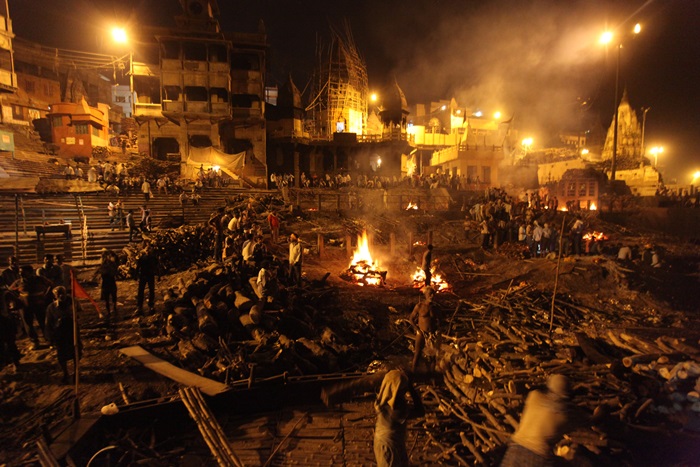 The Manikarnika Ghat is the Mahasmasana, the primary site for Hindu cremation in the city.
Adjoining the ghat, there are raised platforms that are used for death anniversary rituals.
According to a myth, it is said that an earring of Shiva or his wife Sati fell here. Fourth-century Gupta period inscriptions mention this ghat.
However, the current ghat as a permanent riverside embankment was built in 1302 and has been renovated at least three times throughout its existence.
The Manikarnika Ghat is the Mahasmasana, the primary site for Hindu cremation in the city.
Adjoining the ghat, there are raised platforms that are used for death anniversary rituals.
According to a myth, it is said that an earring of Shiva or his wife Sati fell here. Fourth-century Gupta period inscriptions mention this ghat.
However, the current ghat as a permanent riverside embankment was built in 1302 and has been renovated at least three times throughout its existence.
The Jain Ghat
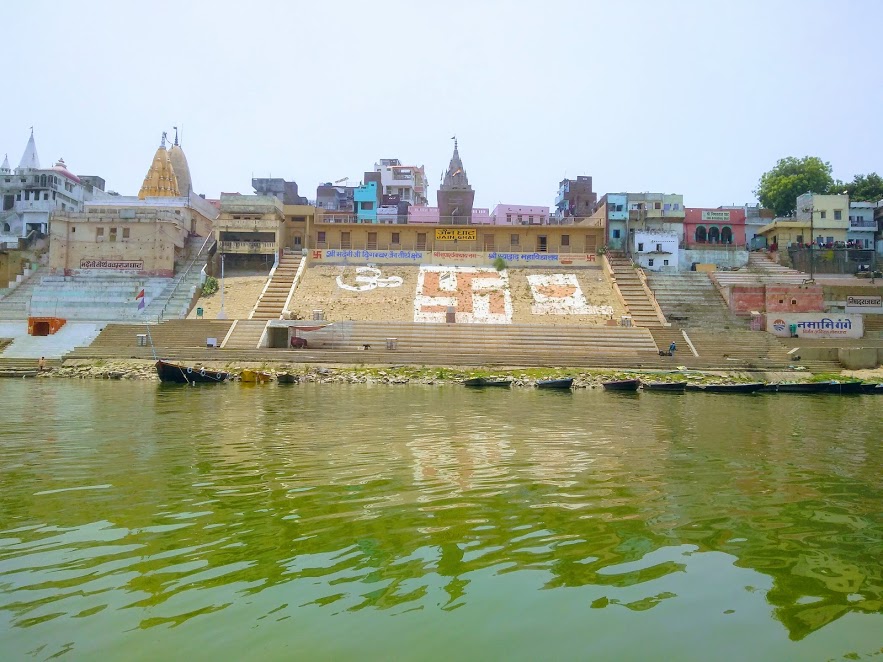 The Jain Ghat is believed to birthplace of Suparshvanatha (7th Tirthankara) and Parshvanatha (23rd tirthankara). The Jain Ghat or Bachraj Ghat is a Jain Ghat and has three Jain Temples located on the banks of the River. It is believed that the Jain Maharajas used to own these ghats. Bachraj Ghat has three Jain temples near the river's banks, and one of them is a very ancient temple of Tirthankara Suparswanath.
The Jain Ghat is believed to birthplace of Suparshvanatha (7th Tirthankara) and Parshvanatha (23rd tirthankara). The Jain Ghat or Bachraj Ghat is a Jain Ghat and has three Jain Temples located on the banks of the River. It is believed that the Jain Maharajas used to own these ghats. Bachraj Ghat has three Jain temples near the river's banks, and one of them is a very ancient temple of Tirthankara Suparswanath.
The Kashi Vishwanath Temple
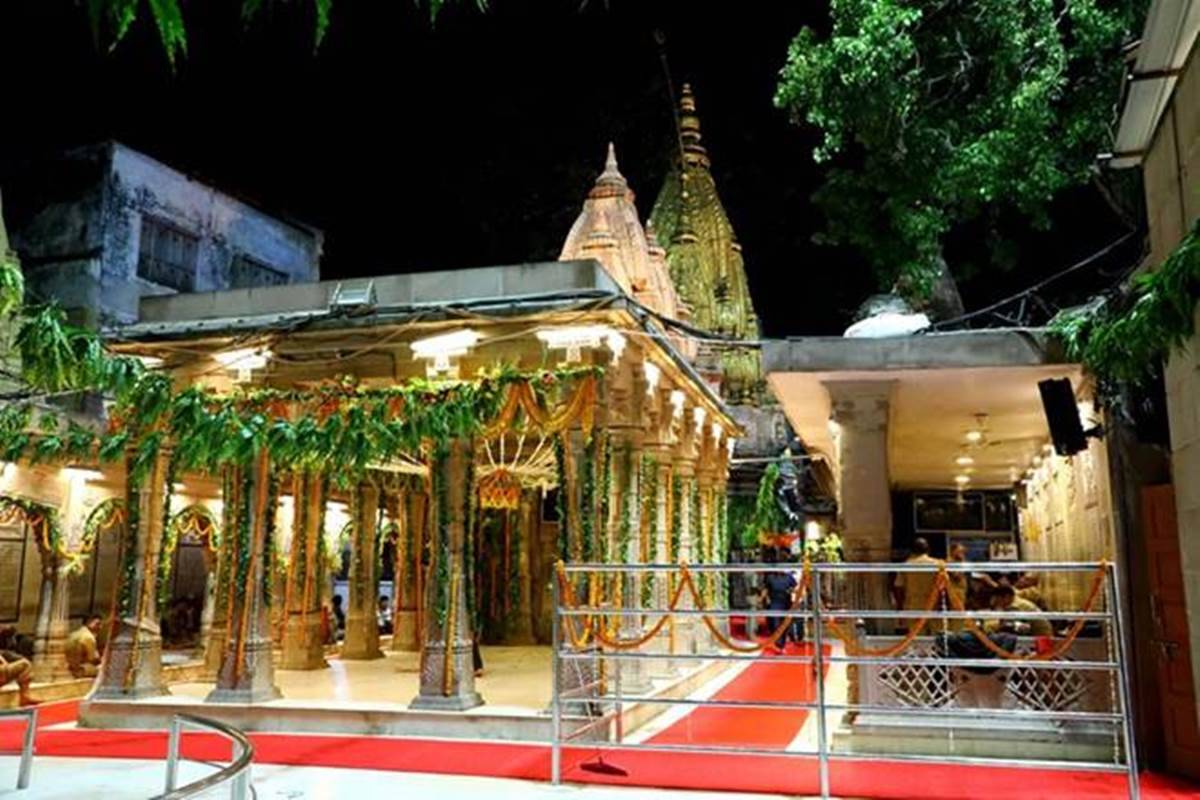 The Kashi Vishwanath Temple, on the Ganges, is one of the 12 Jyotirlinga Shiva temples in Varanasi. The temple has been destroyed and rebuilt several times throughout its existence. The Gyanvapi Mosque, which is adjacent to the temple, is the original site of the temple. The temple, which is also known as the Golden Temple, was built in 1780 by Queen Ahilyabai Holkar of Indore. The two pinnacles of the temple are covered in gold and were donated in 1839 by Ranjit Singh, the ruler of Punjab. The dome is scheduled to receive gold plating through a proposed initiative of the Ministry of Culture and Religious Affairs of Uttar Pradesh. Numerous rituals, prayers, and aartis are held daily at the temple between 02:30 and 23:00.
The Kashi Vishwanath Temple, on the Ganges, is one of the 12 Jyotirlinga Shiva temples in Varanasi. The temple has been destroyed and rebuilt several times throughout its existence. The Gyanvapi Mosque, which is adjacent to the temple, is the original site of the temple. The temple, which is also known as the Golden Temple, was built in 1780 by Queen Ahilyabai Holkar of Indore. The two pinnacles of the temple are covered in gold and were donated in 1839 by Ranjit Singh, the ruler of Punjab. The dome is scheduled to receive gold plating through a proposed initiative of the Ministry of Culture and Religious Affairs of Uttar Pradesh. Numerous rituals, prayers, and aartis are held daily at the temple between 02:30 and 23:00.
Sankat Mochan Temple
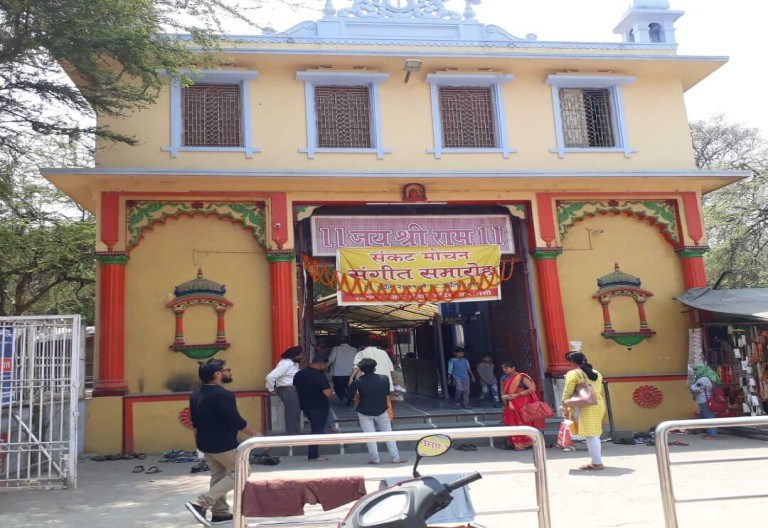 The Sankat Mochan Hanuman Temple, which is situated by the Asi River, is one of the sacred temples of the Hindu god Hanuman. The present temple was built in the early 1900s by the educationist and Indian independence figure, Pandit Madan Mohan Malaviya, the founder of Banaras Hindu University. According to Hindu legend the temple was built on the spot where the medieval Hindu saint Tulsidas had a vision of Hanuman. During a 7 March 2006 terrorist attack, one of three explosions hit the temple while a wedding was in progress, and resulted in injuries to 30 people apart from 23 deaths. Following the attack, a permanent police post was installed inside the temple.
The Sankat Mochan Hanuman Temple, which is situated by the Asi River, is one of the sacred temples of the Hindu god Hanuman. The present temple was built in the early 1900s by the educationist and Indian independence figure, Pandit Madan Mohan Malaviya, the founder of Banaras Hindu University. According to Hindu legend the temple was built on the spot where the medieval Hindu saint Tulsidas had a vision of Hanuman. During a 7 March 2006 terrorist attack, one of three explosions hit the temple while a wedding was in progress, and resulted in injuries to 30 people apart from 23 deaths. Following the attack, a permanent police post was installed inside the temple.